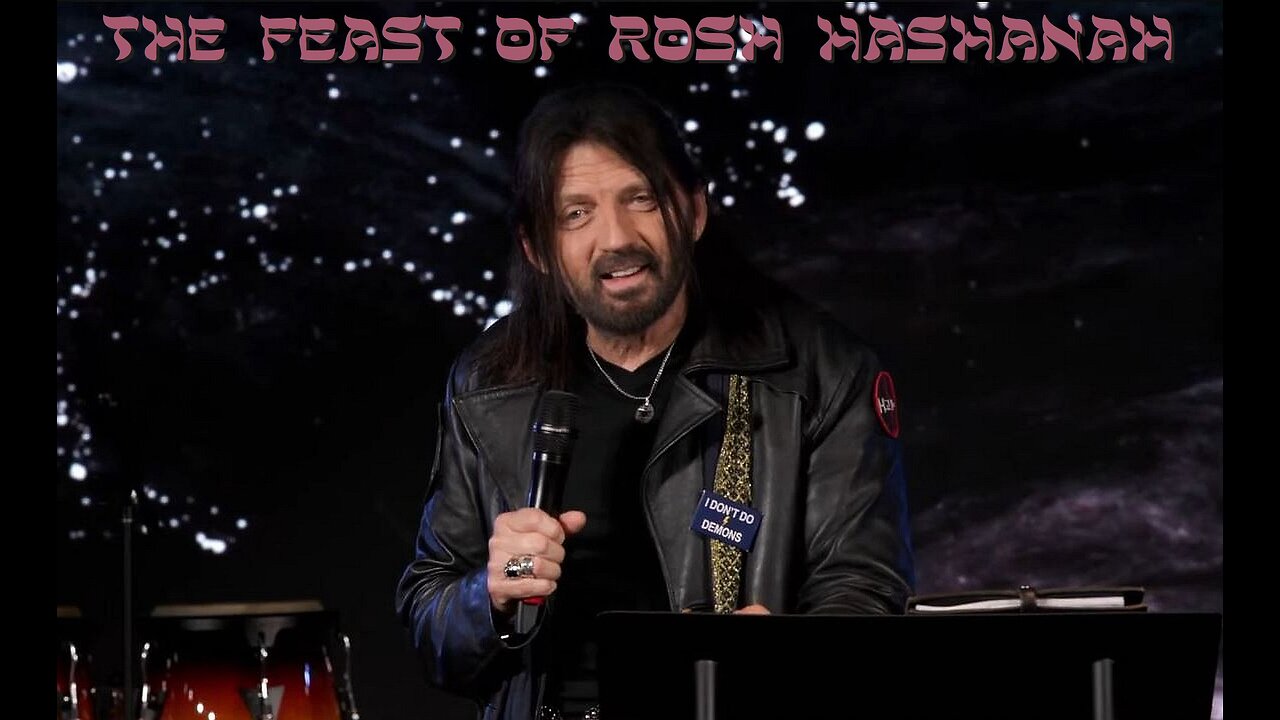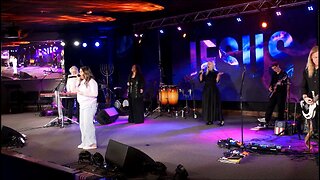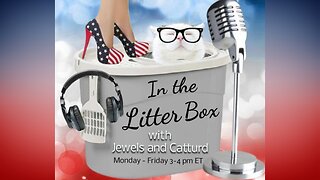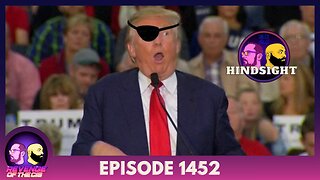Premium Only Content

Robin D Bullock & Pastor Robin R Bullock - 9.17.2023 - Sunday Evening-Rosh Hashanah Celebration
Welcome to the Church International Sunday Evening Celebration & Worship to our Lord Jesus REPLAY for The Jewish New Year, ROSH HASHANAH!!! This Evening we learn about this important Jewish tradition from Pastor Robin & Prophet Robin D. Bullock along with the Church International Worship Team !!! Our Church Family is Celebrating Jesus in 2023 at the NEW Church House in Warrior, Alabama!!! GOD IS ABSOLUTELY GOOD! SHALOM SHALOM!!
~~~~~~~~~~~~~~~~~~~~~~~~~~~~~~~~~~~~~~~~~~~~~~~~~~~
Rosh Hashanah , the Jewish new year, is a fall holiday, taking place at the beginning of the month of Tishrei , which is actually the seventh month of the Jewish year (counting from Nisan in the spring). It is both a time of rejoicing and of serious introspection, a time to celebrate the completion of another year while also taking stock of one’s life.
The High Holiday Period
The two days of Rosh Hashanah usher in the Ten Days of Repentance (Aseret Yemei Teshuvah), also known as the Days of Awe (Yamim Noraim), which culminate in the major fast day of Yom Kippur, the Day of Atonement. The Days of Awe represent the climax of a longer process. Starting at the beginning of the previous month, called Elul, the shofar is traditionally sounded at the conclusion of the morning service. A ram’s horn that makes a trumpet-like sound, the shofar is intended as a wake-up call to prepare for the Tishrei holidays. One week before Rosh Hashanah, special petitionary prayers called Selichot are added to the ritual. Rosh Hashanah itself is also known as Yom Hadin or the Day of Judgment, on which God opens the Books of Life and Death, which are then sealed on Yom Kippur.
Rosh Hashanah History
The origins of Rosh Hashanah may be sought in a royal enthronement ritual from biblical times, though the Bible itself never mentions the “New Year” or “Day of Judgment” aspects of the holiday. Even though Rosh Hashanah falls in the seventh month, later rabbinic tradition decided to designate it the beginning of the year. Although the origin of this tradition may have been adopted from the Babylonians, the rabbis imbued it with Jewish significance as the anniversary of the day on which the world was created, or of the day on which humanity was created. Another explanation can be found in the significance of Tishrei as the seventh month, hence the Sabbath of the year.
Rosh Hashanah Liturgy
The prayer book for the High Holidays is called the Mahzor. Three unique sets of prayers are added to the morning service during Rosh Hashanah. These are known as Malkhuyot, which address the sovereignty of God, Zikhronot, which present God as the one who remembers past deeds, and Shofarot, in which we stand in nervous anticipation of the future.
Each of these sections culminates in the blasts of the shofar, the most potent symbol of the holiday. The shofar is alluded to in the most memorable Torah reading for the holiday, the Akedah or Binding of Isaac (Genesis 22). The story and the shofar serve as reminders of the covenant between God and the people of Israel, carrying with them the message of sacrifice, hope, and continuity. Among the popular traditions associated with the holiday is a ceremony performed on the afternoon of the first day of Rosh Hashanah called Tashlich, when people throw crumbs or pieces of bread, symbolizing their sins, into flowing water.
Rosh Hashanah’s Theology and Themes
This is the time of year during which we are to atone for both our individual — and on Yom Kippur, our communal — sins committed over the course of the previous year, before God literally closes the books on us and inscribes our fates for the coming year. God’s rule over humanity and our need to serve God are stressed time and again over the course of the holiday.
Here are 9 facts about Rosh Hashanah , the Jewish New Year, which is known for apples dipped in honey, record synagogue attendance and as the kickoff to the Days of Awe, which culminate in Yom Kippur, the Day of Atonement. We’re guessing that even the most experienced holiday observer, however, won’t know all of these facts about the holiday:
1. It’s traditional to eat a fruit you haven’t eaten for a long time on the second night of Rosh Hashanah.
When is Rosh Hashanah 2023? Click here to find out.
This tasty custom is often observed by eating a pomegranate, a fruit rich in symbolism (and nutrients). It developed as a technical solution to a legal difficulty surrounding the recitation of the Shehechiyanu blessing on the second day of the holiday. Use it as an excuse to scout out the “exotic fruit” section of your grocery store’s produce department.
2. Apples and honey (and pomegranates) aren’t the only symbolic foods traditionally enjoyed on Rosh Hashanah.
Other foods traditionally eaten to symbolize wishes for prosperity and health in the new year include dates, string beans, beets, pumpkins, leeks — and even fish heads. Sephardic and Mizrahi Jews often hold Rosh Hashanah seders in which a blessing is said for each food and they are eaten in a set order. If you want to try this but are a vegetarian or just grossed out by fish heads, consider using gummy fish or fish-shaped crackers instead
3. Rosh Hashanah liturgy has inspired at least two rock songs.
Avinu Malkeinu, the prayer that means “Our Father, Our King,” inspired Mogwai, a Scottish post-rock-trio, to write a 20-minute epic song “My Father, My King.” The song, which borrows the prayer’s traditional melody, is alternately soft and beautiful and loud and raging. More famously, Leonard Cohen’s “Who By Fire” draws on the Unetanah Tokef, which many consider the most important prayer in the High Holiday liturgy.
4. Tens of thousands of Hasidic Jews make a pilgrimage to Ukraine for an annual Rosh Hashanah gathering known as a “kibbutz.”
Hasidic Jews outside Nachman of Breslov’s grave in Uman, during an annual pilgrimage.
This lively gathering, which dates back to the early 19th century (and has nothing to do with the Israeli kibbutz movement), takes place in Uman, the town where Nachman of Breslov, founder of the Breslover Hasidic sect and great-grandson of the Baal Shem Tov, was buried. Nachman believed Rosh Hashanah was the most important holiday, hence the timing of the pilgrimage.
5. It is traditional to fast on the day after Rosh Hashanah.
The Fast of Gedaliah is not a cleanse for those who overindulged at holiday meals, but a day set aside to commemorate the assassination of Gedaliah, the Babylonian-appointed official charged with administering the Jewish population remaining in Judea following the destruction of the Temple in 586 B.C.E. Unlike Yom Kippur, which comes just a few days later, this fast lasts only from sunrise to sundown.
6. Rosh Hashanah is one of four Jewish new years.
It might be the best known of them all, but Rosh Hashanah is not the only Jewish new year. According to the Mishnah, there are three others. The first of Nisan, the springtime month when Passover falls, is the beginning of the year, according to the Book of Exodus. Jewish tradition also marks Tu Bishvat (the 15th day of the Hebrew month of Shevat) as the new year for trees and the first of Elul (usually in August) as the new year for the tithing of animals.
7. American Jews used to exchange telegrams for Rosh Hashanah. A LOT of them.
In 1927, the Western Union Telegraph Company reported that Jewish people sent telegrams of congratulations and well-wishing much more frequently than members of any other group. In particular, they exchanged thousands of messages for Rosh Hashanah. “So great has the volume of this traffic become that the Western Union has instituted a special service similar to those for Thanksgiving, Christmas and Easter,” JTA wrote. “This special service, started in 1925, showed a 30 percent increase in 1926.”
8. Rosh Hashanah was not always the Jewish New Year.
In the Torah , the beginning of the year was clearly set at the beginning of the month of Nisan, in the spring. However, sometime between the giving of the Torah and the codification of the Mishnah, Rosh Hashanah became the primary new year. The reasons are unclear, although some scholars theorize that it was because neighboring peoples in the ancient Near East celebrated their new years at this time.
9. The shofar, the traditional ram’s horn blown on Rosh Hashanah, can have a bad odor.
You have to get close to one to notice, but a common complaint is that these horns smell bad. According to online vendor The Shofar Man, all kosher shofar s have a bit of a scent because they come from a dead animal. To mitigate the odor, he suggests applying a sealant to the inside of the shofar. Believe it or not, several competing products are marketed exclusively for the purpose of removing or neutralizing shofar smells.
Happy New Year!
-
 3:51:16
3:51:16
Saved ByHisGrace
2 days agoRobin D Bullock & Pastor Robin 2.23.2025 - Church International - Sunday Celebration!
1.03K -
 2:12:58
2:12:58
Robert Gouveia
14 hours agoSenator's Wife EXPOSED! Special Counsel ATTACKS; AP News BLOWN OUT
108K69 -
 55:07
55:07
LFA TV
1 day agoDefending the Indefensible | TRUMPET DAILY 2.25.25 7PM
33.7K14 -
 6:09:26
6:09:26
Barry Cunningham
20 hours agoTRUMP DAILY BRIEFING - WATCH WHITE HOUSE PRESS CONFERENCE LIVE! EXECUTIVE ORDERS AND MORE!
174K50 -
 1:46:37
1:46:37
Game On!
15 hours ago $0.51 earnedPUMP THE BRAKES! Checking Today's Sports Betting Lines!
96.8K3 -
 1:27:21
1:27:21
Redacted News
14 hours agoBREAKING! SOMETHING BIG IS HAPPENING AT THE CIA AND FBI RIGHT NOW, AS KASH PATEL CLEANS HOUSE
198K286 -
 1:08:28
1:08:28
In The Litter Box w/ Jewels & Catturd
1 day agoCrenshaw Threatens Tucker | In the Litter Box w/ Jewels & Catturd – Ep. 749 – 2/25/2025
116K57 -
 44:57
44:57
Standpoint with Gabe Groisman
1 day agoWill Byron Donalds Run for Florida Governor? With Congressman Byron Donalds
76.3K9 -
 1:06:25
1:06:25
Savanah Hernandez
14 hours agoEXPOSED: FBI destroys evidence as NSA’s LGBTQ sex chats get leaked?!
81.9K38 -
 1:59:58
1:59:58
Revenge of the Cis
15 hours agoEpisode 1452: Hindsight
79.8K11